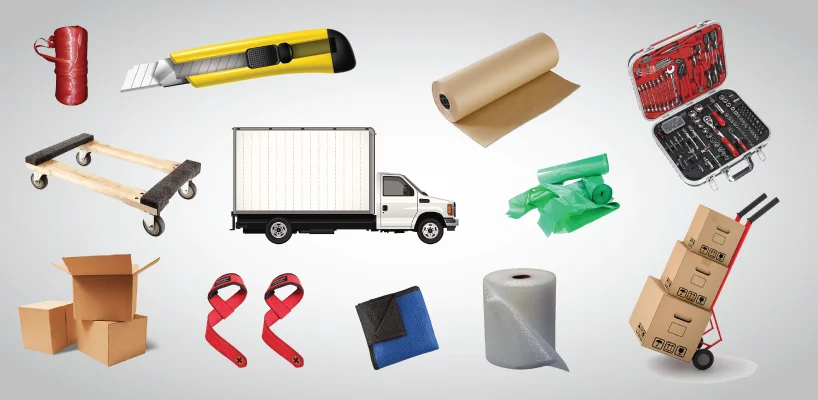You don't have to move mountains to make progress; sometimes, moving a car across the country is all it takes.
When it comes to relocating, buying a car from another state, or simply needing to get your vehicle from Point A to Point B, shipping a car to another state looks like a monumental task.
But it’s not as complicated as it might seem.
In fact, the auto transport industry is thriving, with millions of vehicles being shipped across the United States every year.
According to the American Moving & Storage Association, over 15 million cars are transported annually in the U.S. alone.
Whether you're shipping a car because of a move or purchasing a car from out of state, understanding the logistics and options available can save you both time and money.
The process can depend on distance, the type of vehicle being shipped, and the method you choose, but in general, the cost to ship a car across the country ranges from $550 to $2,500, with the average being around $1,200.
These figures can fluctuate depending on the season, demand, and transport method.
The good news is that you can make the process smooth and affordable without any surprise fees or unexpected delays with the right guidance.
This guide will provide you with every step of shipping a car to another state. Let’s get into this and simplify this process!
Step 1: Assess Your Shipping Needs
It’s important to assess your specific needs when shipping a car.
This will help you identify the best transport method, estimate costs, and plan accordingly.
What to Consider:
Distance: How far is the car being shipped?
For instance, shipping a car across a few states may take a few days, while cross-country shipments can take up to 10 days.
Vehicle Type: Larger vehicles like trucks, SUVs, or luxury cars may require specialized handling. Open car transport is fine for standard vehicles, but luxury or classic cars are better suited for enclosed car transport.
Timeframe: Are you on a tight schedule? Expedited shipping can reduce delivery time but will come at a higher cost.
If you have flexibility, you might be able to find more affordable shipping options.
Step 2: Choose the Right Shipping Method
Once you’ve assessed your needs, the next step is to choose the right shipping method.
There are a few different options to consider based on your preferences and budget:
Open Car Transport
This is the most common and cost-effective method for transporting cars.
In open car transport, your car is loaded onto an open trailer along with other vehicles.
While this is the least expensive option, it does expose your vehicle to weather elements, road debris, and dust during transit.
It's ideal for most everyday vehicles.
Enclosed Car Transport
If you're shipping a luxury, classic, or vintage vehicle, an enclosed transport service is the better option.
Enclosed carriers shield your car from the elements, providing added protection during transit.
However, this comes at a premium price. If the car is valuable or you want to get extra protection, this option is worth considering.
Rail Transport
Rail shipping is another option, particularly for long-distance or interstate moves.
This method can be more affordable than traditional vehicle shipping but may not be available for all destinations.
Rail shipping also offers less flexibility, as it usually follows a fixed route.
Professional Driver (Driveaway Services)
If you want someone to drive your car to another state for you, hiring a driver is an option.
This can be an ideal solution for short-distance moves, but it adds mileage to your car and might be more expensive than shipping via a carrier.
Step 3: Choose a Reputable Auto Transport Company
It’s essential to find a reliable auto transport company to handle your car shipping.
Take the time to research different companies, read reviews, and compare quotes.
Here are some factors on how to choose a reputable auto transport company:
Licensing and Insurance: Check the company is registered with the Federal Motor Carrier Safety Administration (FMCSA) and offers adequate insurance coverage in case of damage during transit.
Experience: Choose a company with a solid track record and experience in shipping cars across states.
Car Shipping Quotes: Always request a detailed breakdown of vehicle shipping rates. Be wary of quotes that seem too low, as this might indicate hidden fees.
Reviews and Reputation: Read car shipping reviews to get an idea of the company’s customer service and reliability.
Step 4: Get Multiple Car Shipping Quotes
It’s always a good idea to get multiple car shipping quotes from different companies.
When comparing quotes, make sure you're considering the following:
All-Inclusive Pricing: Make sure the quote includes all potential fees (insurance, taxes, delivery charges) to avoid unexpected costs.
Delivery Timeframe: If you need the car delivered within a specific window, make sure to choose a company that can accommodate that.
Type of Transport: Be sure the quote reflects your chosen shipping method (open or enclosed carrier).
Step 5: Prepare Your Car for Shipping
Preparing your car for shipping is an important step that ensures the safety of your vehicle and speeds up the process.
Here's how to prepare your car for shipping:
Clean the Exterior and Interior: A clean car makes it easier to inspect for any existing damage and checks that no debris is present during transit.
Document Existing Damage: Take detailed photos of your vehicle from all angles to record its condition. This will help with any claims in case of damage during transport.
Remove Personal Items: Remove any personal items from your car. This reduces the risk of theft or damage, and some companies may refuse to ship cars with belongings inside.
Check for Leaks: Make sure there are no oil or fluid leaks. Some companies won’t transport a car that is leaking fluids for safety reasons.
Disable Alarms: Deactivate your car’s alarm system to avoid unnecessary disruptions during transit.
Step 6: Book Your Shipment
Once you’ve chosen a transport company and prepared your car, it’s time to finalize the booking.
Important Details to Confirm:
Pickup and Delivery Locations: Make sure the company knows your exact pickup and drop-off locations. If you’re shipping to or from a remote area, check if they can accommodate that.
Delivery Timeframe: Confirm the expected delivery time to avoid delays.
Shipping Method: Reconfirm whether you’re using open car transport or enclosed car transport.
Step 7: Monitor Your Shipment
After booking, stay in touch with the transport company to track the status of your shipment.
Many companies offer online tracking systems, and some will provide updates via phone or email.
You should also maintain open communication with the driver to stay informed about any potential delays, weather-related issues, or road conditions that could affect delivery.
Step 8: Inspect Your Car Upon Delivery
When your car arrives at the destination, carefully inspect it to check that it’s in the same condition as when it was picked up.
This is the final step before taking possession of your vehicle.
Exterior Damage: Look for any scratches, dents, or other damage that may have occurred during transport.
Interior Condition: Check that the interior is clean and there is no damage to the upholstery or other features.
Sign the Bill of Lading: Once you’re satisfied with the condition of your vehicle, sign the Bill of Lading. This document acts as proof of delivery and confirms that you have received the car in satisfactory condition.
If you notice any damage, document it with photos and report it to the transport company immediately.
Step 9: Insurance and Protection
While most auto transport companies offer basic coverage for damages that might occur during transport, this insurance may not fully cover the total cost of repairs.
It’s wise to check your own auto insurance policy to see if it extends coverage during shipping.
Additionally, you can go for extra protection through the shipping company.
Many companies offer car transport insurance options that can cover any potential damages beyond what’s included in basic coverage.
How Much Does it Cost to Ship a Car to Another State?
When you're looking to ship a car to another state, one of the first questions that comes to mind is, "How much is this going to cost me?"
And rightfully so! Car shipping can be a significant expense.
Let's break down everything that contributes to the cost of shipping a car so you can get a full understanding of what goes into the pricing.
Typically, shipping a car within the United States costs anywhere between $550 to $2,500.
Here's a breakdown of the costs for different scenarios.
| Factor | Details | Estimated Cost |
|---|---|---|
| Short Distance (Under 500 miles) | Example: Local shipping between states nearby | $350 - $800 |
| Medium Distance (500 - 1,000 miles) | Example: Shipping from one region to another | $700 - $1,200 |
| Long Distance (1,000 - 2,500 miles) | Example: Cross-country shipping | $1,000 - $2,000 |
| Cross-Country (2,500+ miles) | Example: Shipping from East Coast to West Coast | $1,200 - $2,500 |
| SUV/Truck Shipping | Larger vehicles require more space | Add $200 - $500 to the base rate |
| Enclosed Transport | Additional protection for luxury or classic vehicles | Add $400 - $600 to the base rate |
| Expedited Shipping | Faster delivery time | Add $200 - $400 to the base rate |
| Remote Area Pickup/Delivery | Charges for pickup/drop-off in rural areas | $100 - $300 extra per instance |
Additional Costs to Consider
Now, let's talk about other potential costs that could pop up when you're shipping your car.
These are all things that might not be immediately obvious, but they can certainly affect your final price:
Terminal-to-Terminal Shipping
If you're shipping to a less accessible area, you may need to pay additional terminal fees. These fees typically range from $50 to $150.
Fuel Surcharges
Fuel prices can fluctuate, and in some cases, shipping companies may add a fuel surcharge. This usually ranges between $50 and $200, depending on fuel prices at the time of shipment.
Vehicle Modifications
If your car has custom modifications, oversized tires, or is particularly low to the ground, it may require special accommodations.
For example, custom cars or modified vehicles could require additional services or equipment, raising the cost by a few hundred dollars.
Insurance Coverage
Most companies provide basic coverage for damages that happen during transport, but you can purchase premium coverage for extra peace of mind.
The cost of added insurance can range from $50 to $200, depending on the value of your car.
Payment Terms
Some companies offer discounts for paying in full upfront, while others might charge a deposit (usually around $100 - $300) when you book the shipment.
Cost Considerations by Shipping Method
Here’s a more detailed comparison of the costs between the two most common shipping methods: open car transport and enclosed car transport.
| Shipping Method | Details | Cost Range |
|---|---|---|
| Open Car Transport | This is the most common and affordable shipping method. Cars are exposed to the elements but are generally safe and reliable. | $550 - $1,500 |
| Enclosed Car Transport | This option provides extra protection, making it ideal for high-value, classic, or luxury cars. It is more expensive but ensures better safety. | $800 - $2,500 |
Factors Affecting Car Shipping Costs
The cost of shipping a car to another state depends on a variety of factors.
Distance: The longer the distance, the more expensive it gets. The cost per mile usually decreases the more you ship.
Vehicle Type and Size: Larger or heavier vehicles (like SUVs, trucks, or specialty vehicles) will cost more to ship.
Transport Type: The shipping method you choose can significantly impact the cost.
For example, enclosed car transport is more expensive than open car transport.
Seasonality: Peak shipping seasons, such as summer and the holidays, lead to higher demand, which drives up the cost.
Pickup and Drop-off Locations: If your vehicle needs to be picked up or delivered to remote or less accessible areas, you may face higher costs.
Transport Speed (Expedited Shipping): If you need your car delivered faster than usual, expedited services will cost more than standard delivery times.
Tips to Lower Your Car Shipping Costs
Be Flexible with Your Shipping Dates: Flexibility in your car shipping timeline can save you money.
Book Early: The earlier you book your car shipment, the better the chances of getting a good rate.
Choose Open Transport: If your car isn’t a luxury or classic car, open car transport is a great way to save on shipping costs.
Consider Terminal-to-Terminal Shipping: If you’re not too concerned about convenience, terminal-to-terminal shipping can be a cheaper alternative to door-to-door service.
Shop Around: Don’t settle for the first quote you receive. Get quotes from multiple auto transport companies and compare prices and services.
Real-Life Example
Sarah’s Car Shipping Journey from California to Florida
Let us tell you a quick story about Sarah.
She’s a recent college grad who landed her dream job in Florida but had her car in California.
She needed to ship it across the country—about 2,500 miles—but was unsure how to go about it.
So, here’s how it went:
Assessing Her Needs
Sarah knew she didn’t want to spend a fortune, so she went with open car transport, which was the most affordable option for her Honda Civic.
No need for enclosed transport—she just needed her car there safely.
Getting Quotes
Sarah got a few quotes from well-known car shipping companies:
- Montway Auto Transport: $1,100
- AmeriFreight (with basic insurance): $1,300
- Ship a Car Direct: $1,400 (for enclosed transport)
After reading reviews, she picked AmeriFreight, which has a good balance of price and insurance coverage.
Booking the Shipment
She booked the shipment with AmeriFreight, but there was a catch: because the pickup spot was busy, she’d need to drop her car off at a terminal.
It saved her $150.
Preparing Her Car
A few days before the pickup, Sarah cleaned her car, snapped some photos for documentation, and took out any personal items. She checked for any leaks and disabled the alarm.
Simple stuff, but important!
Pickup Day
On pickup day, she drove her car to the terminal. The driver from AmeriFreight inspected it, noted its condition, and Sarah signed the paperwork. Off it went!
Waiting for Delivery
The waiting game began. There was a slight delay because of bad weather in Texas, which pushed the delivery by a couple of days. She also got hit with a fuel surcharge of $50.
That’s shipping for you—things can change!
Delivery Day
Finally, Sarah got the call. Her car had arrived!
She headed to the terminal, checked the car for any damage (luckily, it was all good), signed the paperwork, and drove off with a smile.
The process took about 9 days.
Cost Breakdown
| Service | Cost |
|---|---|
| Base Quote for Open Transport | $1,100 |
| Fuel Surcharge | $50 |
| Terminal-to-Terminal Fee | $150 |
| Total | $1,300 |
Key Takeaways:
Costs vary based on distance, vehicle size, and transport method.
Be prepared for delays—weather and schedules can throw things off.
Basic insurance can save you from surprises, so it's worth considering.
Sarah got her car shipped safely across the country with AmeriFreight without breaking the bank.















































 (239) 799–6077
(239) 799–6077